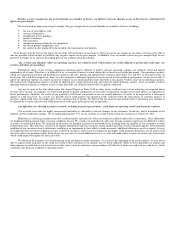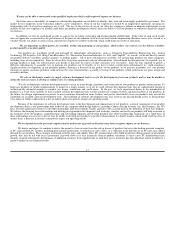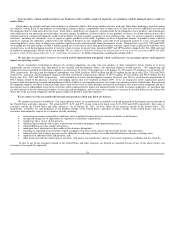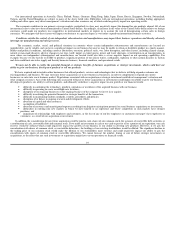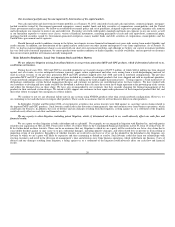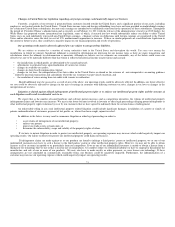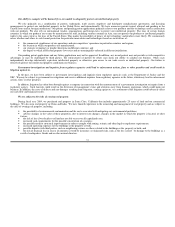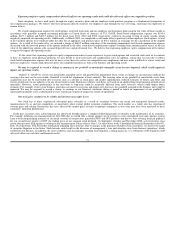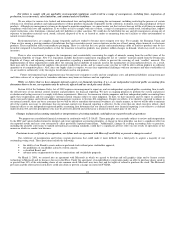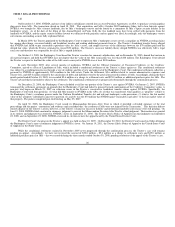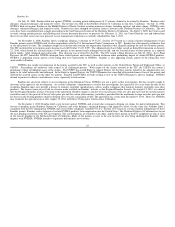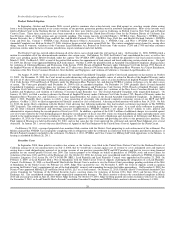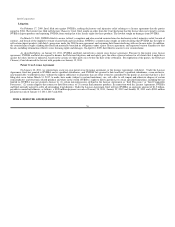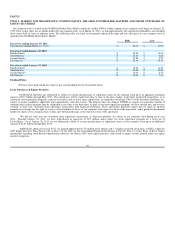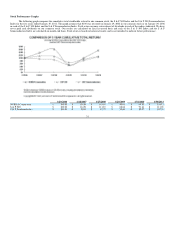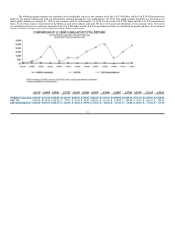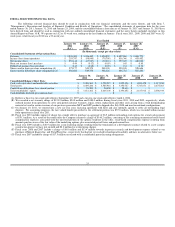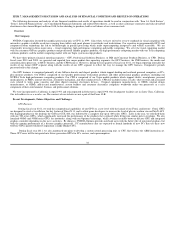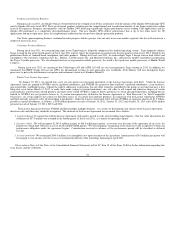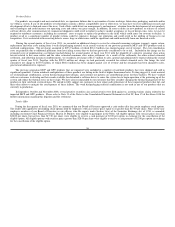NVIDIA 2011 Annual Report Download - page 28
Download and view the complete annual report
Please find page 28 of the 2011 NVIDIA annual report below. You can navigate through the pages in the report by either clicking on the pages listed below, or by using the keyword search tool below to find specific information within the annual report.
ITEM 3. LEGAL PROCEEDINGS
3dfx
On December 15, 2000, NVIDIA and one of our indirect subsidiaries entered into an Asset Purchase Agreement, or APA, to purchase certain graphics
chip assets from 3dfx. The transaction closed on April 18, 2001. That acquisition, and 3dfx’s October 2002 bankruptcy filing, led to four lawsuits against
NVIDIA: two brought by 3dfx’s former landlords, one by 3dfx’s bankruptcy trustee and the fourth by a committee of 3dfx’s equity security holders in the
bankruptcy estate. As of the date of the filing of this Annual Report on Form 10-K, the two landlord cases have been settled with payments from the
landlords to NVIDIA, and the equity security holders lawsuit was dismissed with prejudice and no appeal was filed. Accordingly, only the bankruptcy trustee
suit remains outstanding as more fully explained below.
In March 2003, the Trustee appointed by the Bankruptcy Court to represent 3dfx’s bankruptcy estate served a complaint on NVIDIA asserting claims
for, among other things, successor liability and fraudulent transfer and seeking additional payments from us. The Trustee’s fraudulent transfer theory alleged
that NVIDIA had failed to pay reasonably equivalent value for 3dfx’s assets, and sought recovery of the difference between the $70 million paid and the
alleged fair value, which the Trustee estimated to exceed $50 million. The Trustee’s successor liability theory alleged NVIDIA was effectively 3dfx’s legal
successor and therefore was responsible for all of 3dfx’s unpaid liabilities.
On October 13, 2005, the Bankruptcy Court heard the Trustee’s motion for summary adjudication, and on December 23, 2005, denied that motion in
all material respects and held that NVIDIA may not dispute that the value of the 3dfx transaction was less than $108 million. The Bankruptcy Court denied
the Trustee’s request to find that the value of the 3dfx assets conveyed to NVIDIA was at least $108 million.
In early November 2005, after several months of mediation, NVIDIA and the Official Committee of Unsecured Creditors, or the Creditors’
Committee, agreed to a Plan of Liquidation of 3dfx, which included a conditional settlement of the Trustee’s claims against us. This conditional settlement
was subject to a confirmation process through a vote of creditors and the review and approval of the Bankruptcy Court. The conditional settlement called for a
payment by NVIDIA of approximately $30.6 million to the 3dfx estate. Under the settlement, $5.6 million related to various administrative expenses and
Trustee fees, and $25.0 million related to the satisfaction of debts and liabilities owed to the general unsecured creditors of 3dfx. Accordingly, during the three
month period ended October 30, 2005, we recorded $5.6 million as a charge to settlement costs and $25.0 million as additional purchase price for 3dfx. The
Trustee advised that he intended to object to the settlement. The conditional settlement never progressed substantially through the confirmation process.
On December 21, 2006, the Bankruptcy Court scheduled a trial for one portion of the Trustee’s case against NVIDIA. On January 2, 2007, NVIDIA
terminated the settlement agreement on grounds that the Bankruptcy Court had failed to proceed toward confirmation of the Creditors’ Committee’s plan. A
non-jury trial began on March 21, 2007 on valuation issues in the Trustee’s constructive fraudulent transfer claims against NVIDIA. Specifically, the
Bankruptcy Court tried four questions: (1) what did 3dfx transfer to NVIDIA in the APA; (2) of what was transferred, what qualifies as “property” subject to
the Bankruptcy Court’s avoidance powers under the Uniform Fraudulent Transfer Act and relevant bankruptcy code provisions; (3) what is the fair market
value of the “property” identified in answer to question (2); and (4) was the $70 million that NVIDIA paid “reasonably equivalent” to the fair market value of
that property. The parties completed post-trial briefing on May 25, 2007.
On April 30, 2008, the Bankruptcy Court issued its Memorandum Decision After Trial, in which it provided a detailed summary of the trial
proceedings and the parties’ contentions and evidence and concluded that “the creditors of 3dfx were not injured by the Transaction.” This decision did not
entirely dispose of the Trustee’s action, however, as the Trustee’s claims for successor liability and intentional fraudulent conveyance were still pending. On
June 19, 2008, NVIDIA filed a motion for summary judgment to convert the Memorandum Decision After Trial to a final judgment. That motion was granted
in its entirety and judgment was entered in NVIDIA’s favor on September 11, 2008. The Trustee filed a Notice of Appeal from that judgment on September
22, 2008, and on September 25, 2008, NVIDIA exercised its election to have the appeal heard by the United States District Court.
The District Court’s hearing on the Trustee’s appeal was held on June 10, 2009. On December 20, 2010, the District Court issued an Order affirming
the Bankruptcy Court’s entry of summary judgment in NVIDIA’s favor. On January 19, 2011, the Trustee filed a Notice of Appeal to the United States Court
of Appeals for the Ninth Circuit.
While the conditional settlement reached in November 2005 never progressed through the confirmation process, the Trustee’s case still remains
pending on appeal. Accordingly, we have not reversed the accrual of $30.6 million – $5.6 million as a charge to settlement costs and $25.0 million as
additional purchase price for 3dfx – that we recorded during the three months ended October 30, 2005, pending resolution of the appeal of the Trustee’s case.
26


